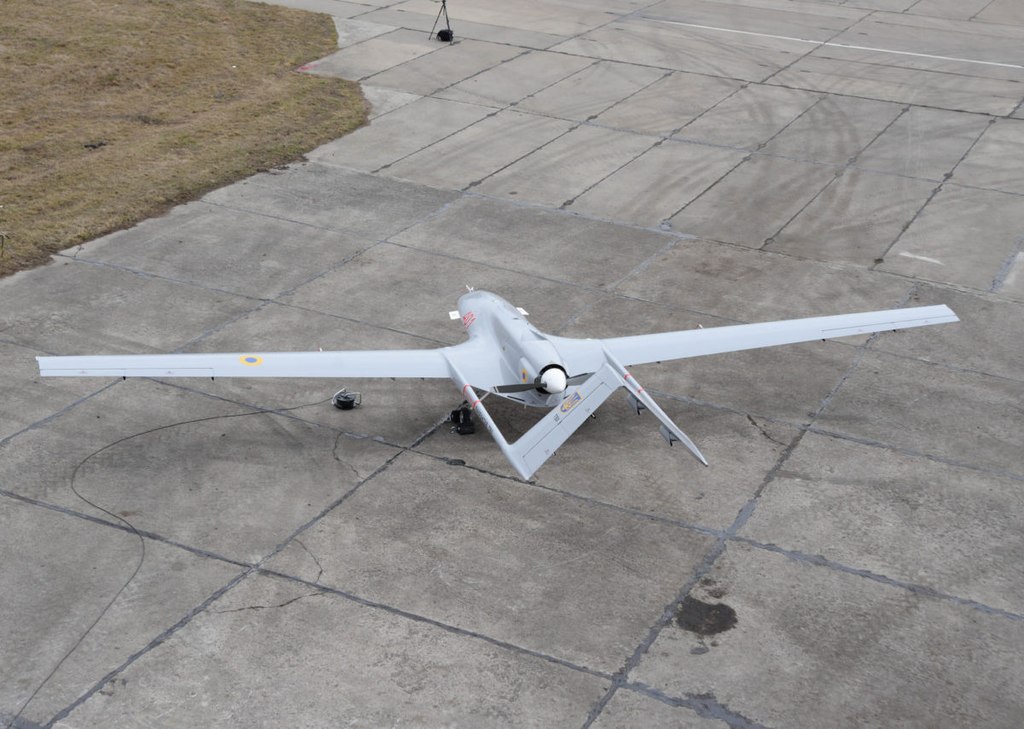Turkish Drones Join Ethiopia’s war, Satellite Imagery Confirms
For months rumors have been circulating that Turkish Bayraktar TB-2 armed drones are being deployed by the Ethiopian government in their fight against the Tigray Defence Forces, an armed resistance group that took up weapons in 2020. In December 2021, the New York Times quoted anonymous Western diplomats who raised concerns over Turkish drone sales and subsequent use. However, verifiable visual identification of Turkish drones in Ethiopia was still lacking.
Now new Planet Skysat high-resolution imagery confirms the presence of the TB-2 at the Harar Meda military airport at Bishoftu, just south of Ethiopia’s capital Addis Ababa. This makes it the third type of armed drone that has been spotted in the ongoing conflict, after the Iranian Mohajer-6 and the Chinese Wing Loong drones, as demonstrated by earlier Bellingcat and PAX investigations. The growing deployment of armed drones is also linked with an increase of allegations that these drones were used in attacks that killed dozens of civilians, wounding many more, with remnants of drone missiles found at strike locations.
The new satellite image, dated 9 December 2021, shows the drone at a hangar at the center of the airbase. Both the wingspan (12m) and length (6.5m) match that of the TB-2.
Below the drone, there are three green container-like structures placed, with two of those having the same measurement. Using known information of the size of the TB-2 Ground Control Station, namely 2.2 x 5.9m, we see a match of those containers with the size of a TB2 GCS. It should be noted that these sizes are fairly standard for shipping containers, making it difficult to clearly identify them as the TB-2 GCS, but the similarities and location make it very likely. There was initially one such container, but from 22 November 2021, two more were placed there, which could indicate an extension of the amount of TB-2 drones at this airbase.
And lastly, a source from Ethiopia that wished to remain anonymous, shared a video with PAX that was allegedly filmed in Karakore, a town in north east Ethiopia on November 11. Though we can not verify the location nor the date, the video does indeed seem to show a TB-2 drone. Using video enhancement, with credit to Timmi Allen from Bellingcat, the outline corresponds with that of a TB-2 as seen in the video below, with the characteristic double tail-wing and rounded fuselage around the wings.
To be certain it is indeed a TB-2, and not a similar looking drone, for example a Iranian Mohajer-6, experts consulted f made ratio comparison of known measurements of the wingspan and lengths of the TB-2 compared with the pixel size of the image, this indeed corresponds with a TB-2.
Enhanced video screenshot from the footage
A drone operating from the shadows
Since the summer of 2021, there have been indications that the TB-2 drone was used, yet these were not conclusive. A photo of fragments of a MAM-L air-to-surface missile, known to be used by TB-2 drones, was shared by Tigrayans with a journalist in October 2021. However, it couldn’t be independently verified where the photo was taken. The next hint was a video shared with Twitter user @Gerjon_, who scans air traffic going in and out of Ethiopia. The video was allegedly shot near Harar Meda airbase. Image analysis and comparison indeed show a convincing match with a TB-2.
Nevertheless, while the similarities were clear, this source also could not be verified, nor were there any recognizable features visible in the video that could be helpful for geolocation, making it difficult to say for certain this was in Ethiopia.
The second clue came in early December from a Planet Skysat image posted by the geospatial analyst Chris Biggers, who spotted an object in October with a possible similar measurement of a TB-2 at Harar Meda airport. However, the satellite image quality wasn’t high enough to be conclusive.
The current confirmed presence based on new satellite imagery of the TB-2 at Harar Meda makes this airbase Ethiopia’s main drone hub. Satellite imagery now shows the presence of Chinese Wing Loong armed drones, and recently satellite imagery published by PAX also showed the Iranian Mohajer-6 drones located at this airfield. These drones were previously spotted at the Semera airbase in the east of the country.
Armed drones and arms export control
The rapid advancement of Tigray forces towards Ethiopia’s capital surprised observers, in particular as Ethiopia has a capable air force with fighter jets and attack helicopters. Yet these were often limited due to a lack of sufficient precision munitions. The arrival of Iranian, Chinese and now Turkish armed drones seems to have turned the tide in favor of the Ethiopian government, putting the Tigrayans on the defensive and forcing them to the negotiating table. The use of armed drones in this conflict seems like a double-edged sword: airstrikes with Mig-23 and Sukhoi Su-27 jet fighters and attack helicopters using unguided missiles and bombs increased the risk of killing civilians, and there are mounting reports on civilian casualties from airstrikes, whereas drones with guided missiles could avert civilian casualties. However, there are strong indications based on eye-witness accounts and munition remnants found in the field that armed drones also have been involved in attacks against civilians or civilian objects.
The numerous human rights violations, some amounting to war crimes, conducted by both the Ethiopian government and the Tigrayan forces, is sufficient reason to halt all arms sales to the country. In 2013, Turkey signed the Arms Trade Treaty (ATT), an international treaty that regulates the trade in conventional weapons, including armed drones. Though Turkey did not ratify the ATT yet, it stated in September 2021 to work towards completing this process. Article 23 of the ATT stipulated that “Any State may at the time of signature or the deposit of instrument of its of ratification, acceptance, approval or accession, declare that it will apply provisionally Article 6 and Article 7 pending the entry into force of this Treaty for that State.” , hence it can be expected of Turkey to adhere to assess its arms export in case it could lead to violation of international humantarian or human rights law. The current approval of sales of TB-2 drones to Ethiopia is out of touch with the human rights situation on ground, which should be sufficient grounds for denial of an export license.
With new arms export contracts for Turkish drones concluded all over Africa, it is expected that the growing deployment of armed drones will soon see an increase in use as well. Already armed drones, either Chinese or Israeli, have been implicated in various strikes by Morocco against separatist groups in 2021 and the country now also operates TB-2 drones. In its 2021 Remote Horizons report, PAX documented the rapid advance of military drones across Africa. Their growing popularity and increased deployment in opaque military operations on the African continent comes accompanied with a general failure to address international calls for transparency and accountability of armed drone strikes, both by African and third states, in particular in counter-terrorism operations. The current developments should warrant for rapid international action to strengthen international legal principles over the use of lethal force and rethink arms export controls and risk assessments around the sale of armed drones.
Special thanks to Timmi Allen from Bellingcat, Frank Slijper and Alejandra Munoz




